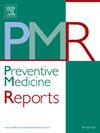On the fence: Factors associated with COVID-19 vaccine hesitancy among sexually Minoritized men who use substances in the United States
IF 2.4
3区 医学
Q2 PUBLIC, ENVIRONMENTAL & OCCUPATIONAL HEALTH
引用次数: 0
Abstract
Objective
Substance use during the COVID-19 (SARS-CoV-2) pandemic has exponentially increased among sexually minoritized men (SMM), who are more vulnerable to COVID-19 transmission, morbidity, and mortality than their heterosexual counterparts. Understanding the factors that mediate and are associated with COVID-19 vaccine uptake in a national sample of SMM that use substances may inform targeted interventions to maximize public acceptance.
Methods
A cross-sectional analysis was performed using data from a national sample of 2753 SMM in the United States between May 2021–July 2022. We performed a mediation analysis using the Karlson-Holm-Breen method, and factors associated with the likelihood of vaccine uptake were modeled using logistic regression, adjusting for time and age.
Results
The median age of the overall sample was 38.9 years old and mainly comprised of White (n = 511; 57 %), HIV-negative (n = 407; 52 %) SMM who used stimulants (n = 724; 92 %). Compared to their counterparts who abstained from drugs in the past three months, SMM who used methamphetamine (aOR: 0.32, CI: 0.24–0.43) or opioids (aOR: 0.52 CI: 0.40–0.67) had significantly lower odds of receiving a COVID-19 vaccine. Those who used cocaine in the past 3 months (aOR: 1.44 CI: 1.20–1.73) had significantly greater odds of receiving a COVID-19 vaccine than those who did not. Vaccine hesitancy partially meditated the direct effects of methamphetamine use on vaccine uptake (OR = 0.40; CI: 0.26–0.61]).
Conclusion
The lower vaccination rates among those with a negative HIV status and those who use methamphetamine and opioids warrant attention to inform future vaccination efforts.
求助全文
约1分钟内获得全文
求助全文
来源期刊

Preventive Medicine Reports
Medicine-Public Health, Environmental and Occupational Health
CiteScore
3.90
自引率
0.00%
发文量
353
 求助内容:
求助内容: 应助结果提醒方式:
应助结果提醒方式:


